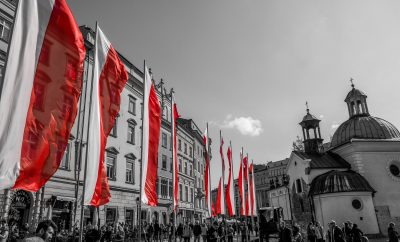 Image courtesy of [Flikr via Tommie Hansen]
Image courtesy of [Flikr via Tommie Hansen]
IP & Copyright
Your Nighttime Eiffel Tower Pictures Are Illegal
Previous fun facts about French life have let us in on a little secret: French people are picky. Each French city’s mayor or maire possesses the authority to establish policies that maintain public order. In Paris, rules vary according to arrondissement, or district.
So, the French are detail oriented. They like their rules and that’s okay.
However, their latest regulation—on copyright—is so strict that it’s funny. La Tour Eiffel, the Eiffel Tower’s official website states that although snapping some photos of the famous landmark is alright in the daylight, pictures are off limits when the sun goes down. My deepest condolences to anyone who ever dreamed of having a nighttime Parisian wedding photo shoot. The website explains, “its various illuminations are subject to author’s rights as well as brand rights. Usage of these images is subject to prior request from the “Société d’Exploitation de la Tour Eiffel.”
The structure of the Eiffel Tower itself is in the public domain. What isn’t in the public domain is the show put on at night during which different color lights are projected onto the landmark. That, instead, belongs to an artist who takes liberties and utilizes style to determine which lights, colors, speed the illuminations take place. Therefore, a reproduction of the work would require permission—and perhaps compensation—of said artist.
Essentially, it’s a time issue. The Eiffel Tower was built long before pretty lights were shone on it. This EU Information Society Directive includes a clause asserting that buildings in public spaces are to be in the public domain. However, France is one of the countries that refrained from adopting the directive into its law. Italy and Belgium also refused the directive and retained their stricter policies. Belgium experiences the same issues with its Atomium, delineating on its website that “the image of the Atomium is protected and can only be used under certain conditions…Prices depend on whether it is to be used for a cultural, educational or commercial purpose.”
One must ask: when copyright law restricts something so large, so famous, and so iconic, how can it truly be enforced?
Wikipedia pages are being careful about it. Atomium pages include censored images or photographs of Atomium models. Poor Instagram will probably never see the legal light show. Illegal, however, can be found by a simple search of #eiffeltower. Google Images is chock-full o’ examples.
Ultimately, the regulation probably isn’t causing any tourists severe angst. That doesn’t, however, detract from the fact that it is copyrighted and nighttime Eiffel Tower pictures constitute infringement. We may take for granted our ability to legally Instagram post Lady Liberty at 3:00am with abandon.








Comments